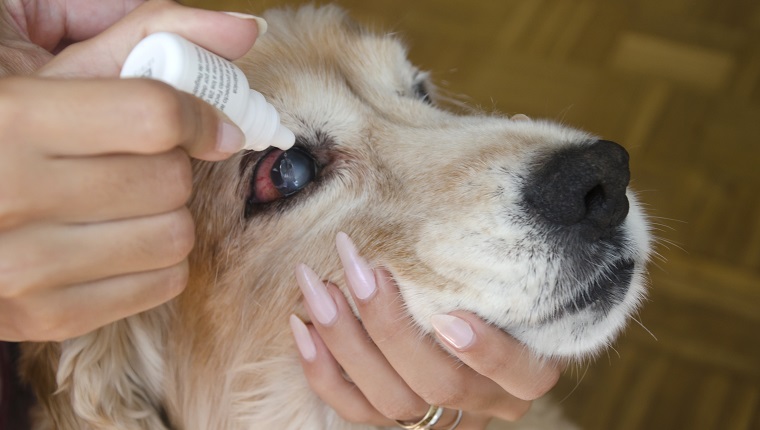Eye allergies in dogs usually present themselves as a redness of the eyes. Just like seasonal human allergies, environmental factors are often the cause.
When this condition is caused by environmental issues, it’s also known by the medical term allergic conjunctivitis. Additionally, dogs who experience skin allergies seem to be more likely to also suffer from allergies that affect the eyes.
If you see signs that your dog might be suffering from allergies or eye issues, then you must consult your veterinarian for a proper diagnosis and advice. Here’s what you should know about the symptoms, causes, and treatments of eye allergies in dogs.
Symptoms Of Eye Allergies In Dogs
Eye allergies in dogs usually bring on the symptom of redness of the eyes. This redness frequently appears in both of a dog’s eyes if they are suffering from allergies.
Some of the additional symptoms include:
- Eye discharge
- Squinting
- Repeatedly pawing at the face
Causes Of Eye Allergies In Dogs

The causes of eye allergies in dogs are usually aggravating environmental factors, such as pollen or mold.
Additionally, dog who experience skin allergies — which are known as allergic dermatitis — seem to be more likely to also suffer from allergies that affect the eyes.
Some of the breeds of dog that are most prone to skin allergies include:
- Poodles
- French Bulldogs
- German Shepherds
- Cocker Spaniels
- Boxers
- Golden Retrievers
Veterinary Treatments
If you notice that your dog is suffering from eye allergies, your veterinarian will want to conduct a physical examination and also ask questions about any environmental factors that might be causing the condition.
The vet can use a conjunctival cytology to try to confirm a diagnosis, and your vet will also want to try a series of other tests to rule out other conditions that may bring on similar symptoms.
A conjunctival provocation test is another method to confirm allergies; although, you may need to schedule a visit to a canine dermatologist to administer it.
When it comes to treatment, your vet might suggest that you flush your dog’s eyes with sterile saline a couple of times a day. Your vet can guide you through the process.
Eyedrops that contain steroids are another treatment option. As always, if your vet prescribes any medicine for your dog, it is vital that you stick to the precise dosage and frequency instructions and complete the full course of medication.
If your dog’s allergies still don’t clear up, your vet might refer you to a dog dermatologist who can carry out more accurate allergy tests.
Does your dog suffer from eye allergies? How do you help their eyes feel better? Tell us all about it in the comments below.





